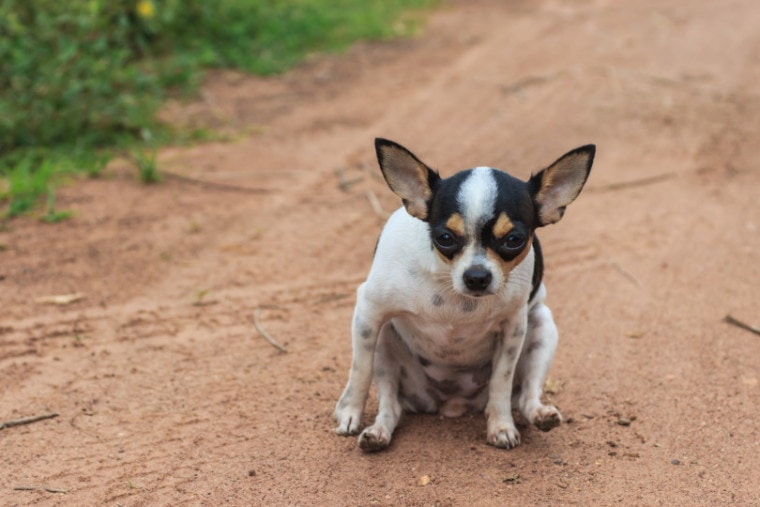
Seeing your dog drag their butt across the floor might look very funny to you. It can also be very embarrassing for you if it happens in front of friends and visitors.
The behavior is commonly called “scooting” and is not something to ignore. Scooting is a clear indication that your dog is feeling some pain or discomfort on their rear end. If it happens only once or twice and stops, it might be a momentary issue such as a piece of dry feces stuck in the hair around the anal area. But if the behavior is repeated with more frequency, this is an indicator of a medical issue that needs to be addressed. Let’s get into the details.
What Medical Issues Can Cause a Dog to Scoot?
Anything causing irritation, inflammation, pain, or discomfort around the anus area can cause a dog to scoot. The following are the most common causes for this behavior.
1. Anal Sac Problems
Have you ever wondered why dogs love to sniff each other’s butts? Well, it turns out that dogs have some special secretory glands that produce a foul-smelling substance that is very attractive to their conspecifics. This liquid drains into a pair of sac-like structures located on opposite sides inside the anus, called anal sacs. The smell produced by the anal sacs is like a signature smell and it is used to communicate their presence to other dogs—just like a biomarker. Under normal conditions, the defecation of the dog will trigger the emptying of the sacs and the smelly substance will be released with the stool.
However, if the stool is not hard enough, like in cases of diarrhea, or if the dog has constipation, then the contents are not released and it can start building up. The built-up contents tend to solidify, causing the sacs to get clogged. Clogged sacs cause discomfort, get infected, and can even get abscessed. When a dog is scooting, they are trying to deal with the pain and discomfort. However, the scooting itself tends to make issues even worse as the irritation and bacteria from the ground add to the inflammation and infection, which can create a vicious cycle.

Clogged Anal Sacs
Clogged anal sacs need to be expressed and this is ideally done at a veterinary clinic. In the past, dog groomers used to empty the anal sacs as part of the routine grooming procedure, however, it was discovered that this practice causes the sacs to lose their muscle tone and the ability to drain naturally. Anal sacs should not be unnecessarily manipulated. So, it is not recommended that the anal sacs are manually expressed unless they are overfull and have grown. It is a good dog owner’s practice to check on this whenever a vet appointment occurs, as your vet can easily express the sacs.
If the anal sacs are not enlarged, groomers should refrain from manually emptying them, however, checking them on every dog during grooming is a good practice that should be encouraged.
Infected Annal Sacs
If the anal sacs have developed an infection, this should be addressed to a vet. The veterinarian will clean with antiseptic solution after expressing the glands and then recommend a course of oral antibiotics and antibiotic creams.
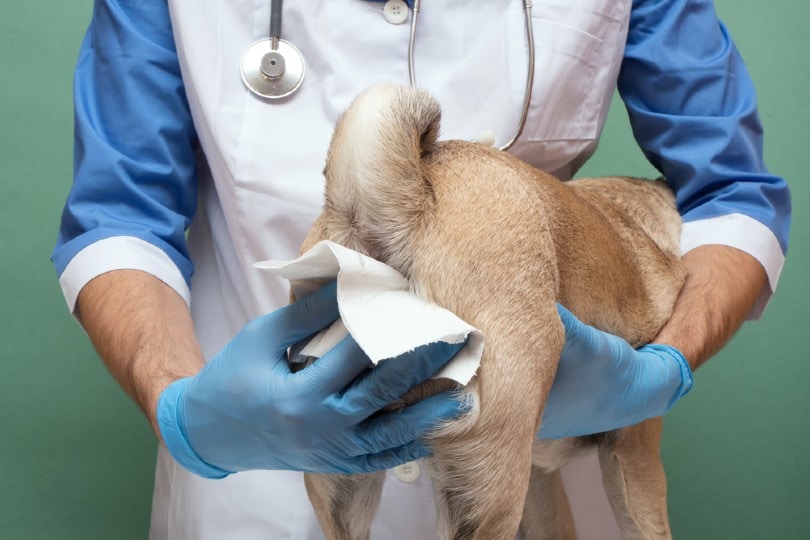
Abscessed Annal Sacs
If the anal sacs have developed into an abscess, the treatment will require a veterinarian to incise and drain the abscess or in very extreme cases, a small surgery will be needed. To avoid getting to this extreme case, please do not postpone the veterinary visit. Anal sac problems tend to get worse if left unattended due to the trauma and bacteria dragged from the floor when scooting. Also, your floor or carpet will be polluted by the dog’s fecal bacteria or pieces of fecal matter.
If the vet determines the dog is suffering from anal sac problems or this becomes recurrent, talk to him or her about specialized products like Glandex. Glandex makes peanut butter dog treats that improve and support your dog’s digestion and anal sac health by helping the sacs to express easier. They also have some special pet wipes to clean your dog’s rear end. These wipes are based on enzymatic cleaners and natural products that are gentle and beneficial for your dog’s anal sac issues.
2. Parasites
Flea-infested dogs get infected by tapeworms after accidentally ingesting infected fleas containing tapeworm larvae. This usually happens while they are grooming and scratching themselves with their teeth. Tapeworms are flat and segmented intestinal parasites that cause a dog to scoot. In some cases, the tapeworm segments, called proglottids, can be seen around the anal area of the dog. They resemble a grain of rice, and they cause irritation or discomfort in the anal area. Each released segment carries around 20 tapeworm eggs.
A vet should confirm the tapeworm infestation with a fecal test and prescribe a deworming Praziquantel schedule for your dog. You should also keep your dog’s flea prevention schedule up to date to avoid re-infestations. Consult your vet about an effective way of getting rid of fleas in the home environment.
In the cases of clogged or infected anal sacs or parasite infestations, your scooting dog will likely also bite or lick their anal area and rear end in an attempt to relieve the pain and discomfort.
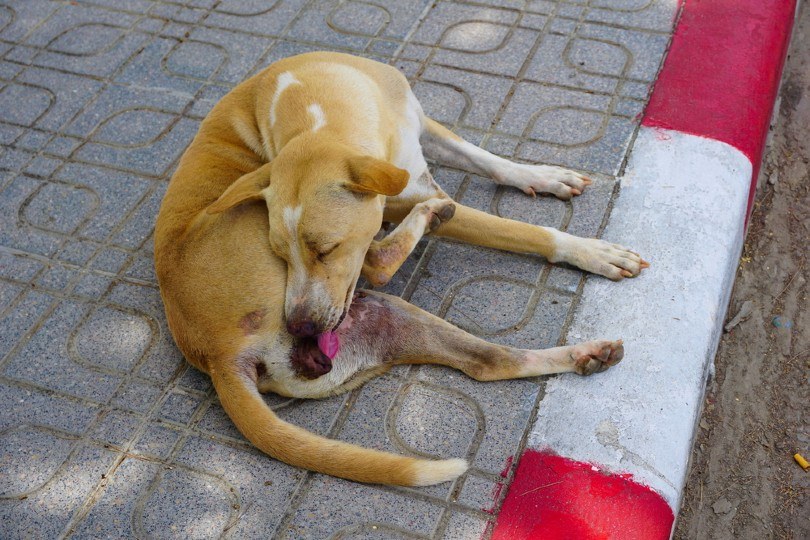
3. Food Allergies
Food sensitivities and allergies cause gastrointestinal discomfort, bloating, and unformed and soft stool. Soft stool does not affect enough mechanical pressure to trigger the anal glands to empty their content into the stool. Overfilled anal sacs develop problems as previously explained in this article. Adding some fiber into the dog’s diet can help with the stool consistency; pure canned pumpkin, all-bran cereal, brown rice, beets, and carrot all work great.
You will still need to figure out what it is that your dog’s digestive system is sensitive to, and that is done by changing diets or by a full elimination diet, where the dog is given minimum ingredient diets and ingredients are added gradually to allow discovering what ingredient is the one causing problems. A veterinarian should be able to make a specific plan to help you discover your dog’s sensitivity. Besides the food sources of fiber, there are good commercial and easy-to-supply flavored treats or powder formulas to add to your dog’s food.
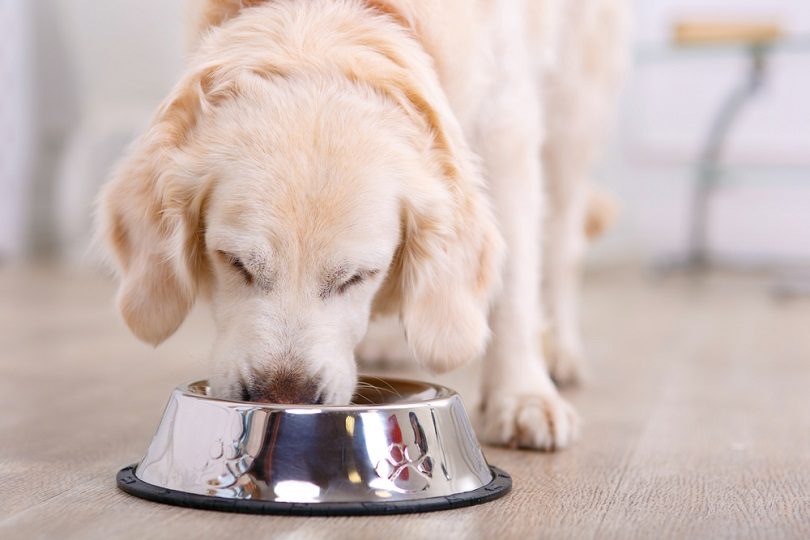
4. Irritation
If there has been a recent trip to the groomer, a change of shampoo, or a new “dog perfume,” chances are that the scooting is caused by topical irritation from those products. A dog suffering from irritation also tends to roll over on their back and scratch. If this is the case, use a hypoallergenic natural oat-based dog shampoo and ask the groomers to use only this product to bathe, skip the perfumes, and be very careful when clipping and trimming your dog. Razor burns can be the cause of the irritation. Other possible causes of irritation can be the floor or carpet cleaning products or even the products used to clean the dog’s bedding. So, if there was a recent change of those products around the time the dog began the scooting behavior, try swapping them back for the old ones.
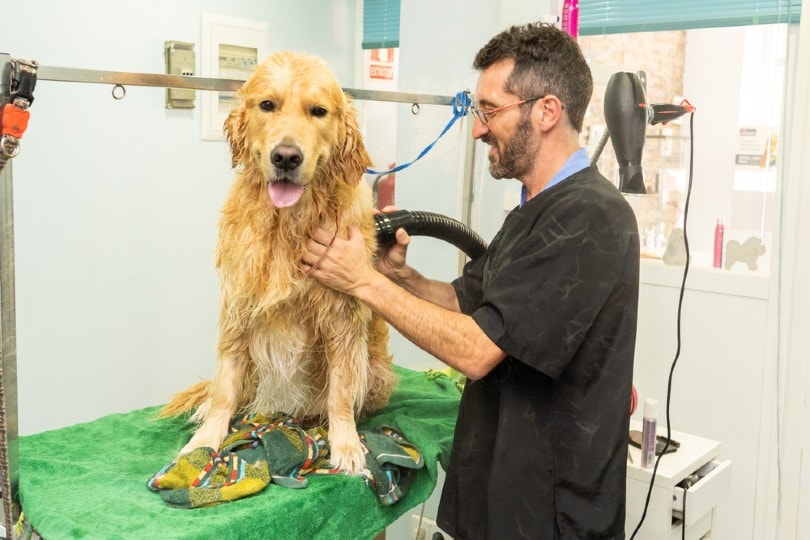
Conclusion
A dog scooting might look funny or embarrassing—depending on the context—but it is a clear indication that something is causing pain or discomfort on your dog’s rear end. After analyzing recent changes in cleaning products, it is recommended to visit the veterinarian to rule out anal sac issues and parasites. The vet will help you find a solution to this problem according to the specifics of the case.
- Next on your reading list: How To Express A Dog’s Anal Glands (8 Simple Steps)
Featured Image Credit: boyphare, Shutterstock







